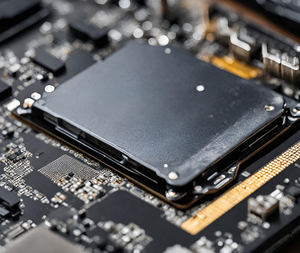Uh oh, is your computer acting sluggish? Your SSD might be on its last legs!
الجسم
Let's face it, losing important files is no picnic. It's like accidentally leaving your delicious homemade cookies in the oven for way too long – a total bummer. But what if the culprit behind your data woes is your trusty Solid State Drive (SSD)? Don't worry, tech friend! This guide will turn you into an SSD detective, helping you spot the warning signs of failure before your data disappears faster than a slice of pie at a bake sale.
SSDs: Built for Speed, But Different Under the Hood
Unlike your old spinning hard drive (HDD) that sounds like a tiny washing machine on a spin cycle, SSDs store data on flash memory chips – think of them like super-fast USB sticks built right into your computer. This makes them lightning-quick, letting you boot up in seconds and load programs in a flash. But here's the catch: SSDs have a limited lifespan because of something called "write cycles." Imagine your car has a set number of miles it can travel before needing a major overhaul. SSDs are similar – they can only handle so much writing of data before they start to slow down or fail. Don't worry, though, most SSDs last for several years with normal use.
Warning Signs: When Your SSD Starts Acting Up
Just like that weird cough before a cold, your SSD will often give you some hints before it completely crashes. Here's what to be on the lookout for:
- The Slow and Steady Struggle: Remember how your computer used to boot up in a blink? Now it feels like it's taking forever to get to the login screen. This could be a sign that your SSD is struggling to keep up. Imagine trying to run a marathon in sandals – it's just not going to happen smoothly.
- The Dreaded Freeze: Is your computer freezing more often than a quarterback in the Super Bowl? Especially during tasks that require a lot of drive activity, like loading games or editing videos. This erratic behavior suggests the SSD might be having trouble keeping up with the workload. Think of it like overloading a circuit with too many appliances – things are bound to get glitchy.
- Error Messages Galore: Those blue screens or pop-ups mentioning disk errors and file system corruption aren't there to scare you (well, maybe a little). They're your computer's way of saying, "Hey, there's something wrong with the SSD!" Don't ignore these warnings!
- The Disappearing Act: Ever open a folder and find your important documents have vanished like ghosts? This can happen if bad sectors develop on the SSD, rendering them inaccessible. Unexplained file loss is a big red flag, so don't just shrug and say "Must have misplaced them."
- Read-Only Blues: Imagine showing up to your house with groceries only to find the door locked and a note saying "Read Only." That's what happens when your SSD enters read-only mode – you can access existing data but can't save anything new. This is a major sign to back up your data immediately!
- The S.M.A.R.T. Blues (for the Tech-Savvy): Most modern SSDs support Self-Monitoring, Analysis and Reporting Technology (S.M.A.R.T.). Think of it as a built-in monitoring system for your SSD. You can use software tools to check your S.M.A.R.T. status, which might reveal warnings or impending failures detected by the drive itself.
Taking Action: Don't Let Your Data Go Kaput!
If you're experiencing one or more of these warning signs, don't panic! Here's how to fight back and save your precious files:
- Give Your SSD a Rest: The more you use your SSD after these signs appear, the higher the chance of permanent data loss. It's time to stop using your SSD as much as possible to prevent further damage.
- Backup, Backup, Backup!: This cannot be stressed enough. Use a reliable external hard drive or cloud storage to create a complete copy of your data. Remember, prevention is always better than cure. Don't be like that friend who never backs up their phone – a data disaster is never fun!
- Data Recovery Software (Worth a Shot): In some cases, data recovery software such as SFWare might be able to salvage lost files. However, success rates depend on the severity of the failure. Professional data recovery services might be necessary for critical data.












تعليقات